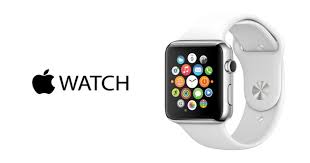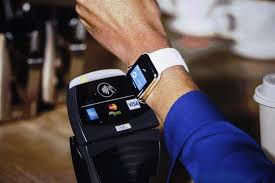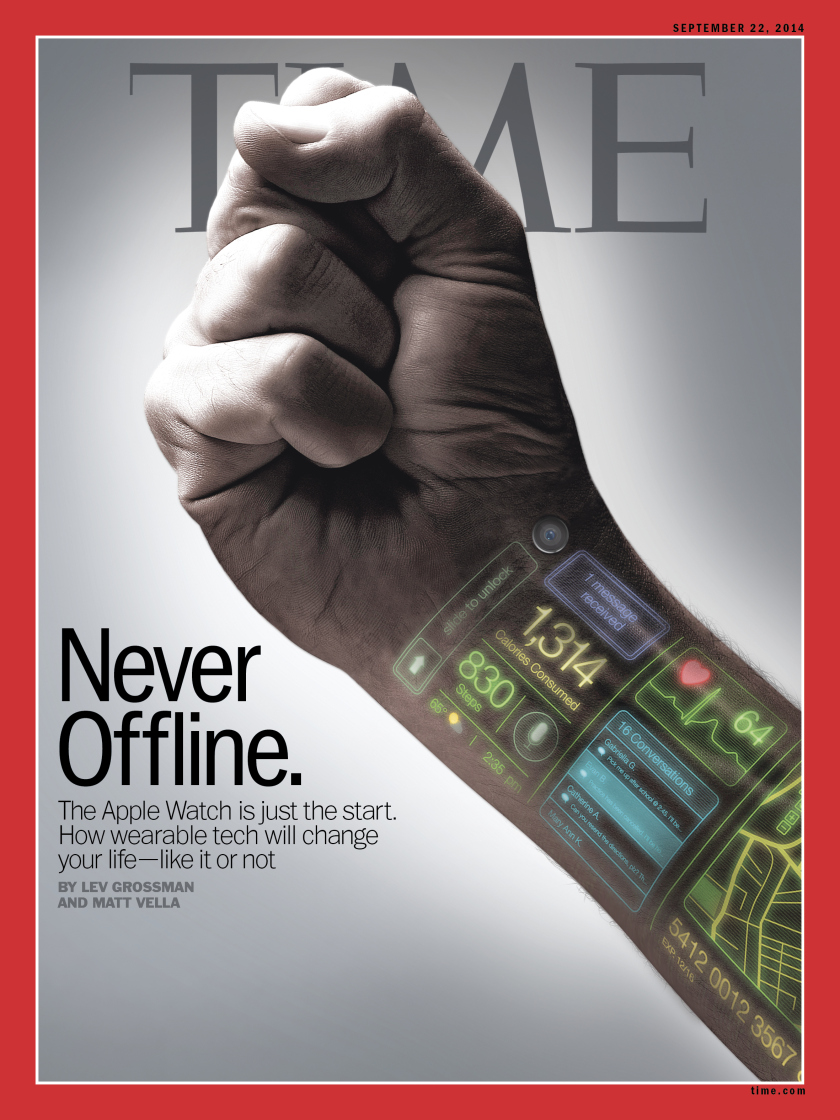From Apple Watch to iMplant?
I am always on the lookout for ways to use technology to serve and cultivate biblical spirituality. For instance, I use my phone to listen to Max McLean read Scripture via The Listener’s Bible, pray through a passage of Scripture using the Olive Tree Bible Study App, work on Scripture memory with the Fighter Verses app, and listen to podcasts, like that of the president of the seminary where I teach, Dr. Albert Mohler.
I also commend the use of the Day One app for journaling, the Flashcards Deluxe app for prayer lists, and the Logos Bible Software app for on-the-go access to study resources. And, of course, just about every believer with a smartphone or tablet uses apps like Kindle, iBooks, and GoodReader to read Christian books.
So I am very interested to see whether the new Apple Watch can be a beneficial piece of technology. On the one hand (no pun intended), before the announcement I really didn’t think I’d have much interest in a  smartwatch. On the other hand, I know that Apple has a way of developing and marketing products that you never thought you could use until you saw them.
smartwatch. On the other hand, I know that Apple has a way of developing and marketing products that you never thought you could use until you saw them.
I remember the 2010 Apple TV ad for the iPhone 4, which was the first to feature FaceTime. At exactly the ten-second mark in that commercial I said out loud, “I’ll buy that.” For you see, I’m just like the guy in the hotel room in that commercial. I’m the guy often away from his wife and daughter (who was then at least fifteen years older than the baby girl in this ad) and calling home from the loneliness of a hotel room. When that little girl smiles in perfect time to Louis Armstrong’s “When Your Smiling,” and her dad sees that smile light up his phone in a hotel room, I’m sold.
Before that commercial I wasn’t interested in upgrading my phone.I remember the competing Android ad at the time did less than nothing to make me want to switch. It showed robotic arms in a dark room creating phones while a robotic voice buzzed “Droiiiidd.” But exactly ten seconds into this iPhone commercial I’m ready to run down to the Apple Store and get one. Why? It was technology that could bless me with the face of my wife and daughter when I’m away from home.
So I’ll be interested to see if Apple can show me something in the months before the launch of its watch to make it appear irresistible. But in any case, I’ve been thinking about the Apple Watch a little differently than I did with previous blockbuster products. It doesn’t rule out the possibility I’ll get one, but it has made me a little more thoughtful about what the Apple Watch may portend about the future.
In the concluding lines of the cover story of the September 22, 2014, Time magazine, authors Lev Grossman and Matt Vella wrote:
The Apple Watch represents a redrawing of the map that locates technology in one place and our bodies in another. The line between the two will never be as easy to find again. Once you’re O.K. with wearing technology, the only way forward is inward: the next product launch after the Apple Watch would logically be the iMplant. If Apple succeeds in legitimizing wearables as a category, it will have established the founding node in a network that could spread throughout our bodies, with Apple setting the standards. Then we’ll really have to decide how much control we want–and what we’re prepared to give up for it (“iNeed?”, p. 47).
It’s important to realize that at no point in their lengthy article did Grossman and Vella make any reference whatsoever to the Bible, prophecy, or eschatology. Unwittingly, however, the final lines of their piece raises the eyebrows of anyone familiar with the last chapters of the Bible.
Revelation 13 introduces a terrible apocalyptic figure considered just a notch lower than Satan himself: the beast. In verses 16-18, in what is undoubtedly one of the most frequently-mentioned sections of the book, are these words about the beast: “Also it causes all, both small and great, both rich and poor, both free and slave, to be marked on the right hand or the forehead, so that no one can buy or sell unless he has the mark, that is, the name of the beast or the number of its name. This calls for wisdom: let the one who has understanding calculate the number of the beast, for it is the number of a man, and his number is 666.”
The day the Apple Watch was announced, one of my seminary colleagues and I were recalling the angst experienced by many Christians when bar codes were first becoming common. There was much hand-wringing among those who took the Bible seriously about whether bar codes could be the Mark of the Beast referred to in Revelation 13:16-18. Soon each person would have their own personal ID bar code tattooed on their hand or forehead and no one could buy or sell without it, so the speculation went. Granted, the bar code scenario was probably the most reasonable, real-life possibility involving the Mark of the Beast that had ever come along. After all, bar codes were beginning to appear on almost everything and it wasn’t difficult to imagine sticking your hand under a scanner to pay for all the groceries that had just passed under the same scanner.
But the fears of bar code tattoos never materialized even though bar codes are used more widely than ever. As many reading this have done, I’ve even scanned bar codes with an app on my phone in order to compare the price of an item in a store with the same item at another store or online. But when you envision every last person on earth getting a bar code tattoo in order to buy or sell, there’s still a big technology lag that has to be overcome for that to happen. A whole lot of people in the world can’t get electricity or even clean drinking water in their area, much less a bar code reader installed in every tiny shop and store on earth.
Where things get a little more interesting with the Apple Watch, however, is that at the September 9 product launch, Apple CEO Tim Cook also announced Apple Pay, which some believe may be the most world-changing  product of the event. A retailer installs a small device which can receive radio waves emitted from your Apple Watch (or iPhone). To pay for an item you simply bring the iWatch near the reader. Money from your bank account or credit card then transfers to the seller’s account.
product of the event. A retailer installs a small device which can receive radio waves emitted from your Apple Watch (or iPhone). To pay for an item you simply bring the iWatch near the reader. Money from your bank account or credit card then transfers to the seller’s account.
When you consider the certainty of the further miniaturization of the kinds of technology Apple introduced with the Apple Watch and Apple Pay, and the certainty of more implantation of miniature technology into the human body (which is already a common practice), a world described by Grossman and Vella, as well as in Revelation 13 doesn’t seem so implausible.
It still may be a long, long time before virtually every person on the planet–including the millions born into poor, rural settings far from any hospital and modern technology–receives an implant that will be necessary to buy and sell in their remote village, even if you factor in the ubiquity of satellite technology to which such implants might connect. And many Bible-believing scholars of both premillennial and amillennial perpsectives acknowledge that the mark of the beast may not necessarily be a physical feature, “though [it] may be that,” but it may “symbolize the spiritual control of heart allegiance and behavior” (ESV Study Bible).
Moreover, notice carefully what Revelation 13:16-18 says and doesn’t say. It doesn’t say that the mark of the beast is an individual’s ID number (like a Social Security number) or even some technological identifier that transmits vital data about you, rather “the mark” is “the name of the beast or the number of its name.” The mark of the beast is the mark of the beast, not a mark about you.
So is the Apple Watch the mark of the beast? No. Is it the very next step before the mark of the beast? I seriously doubt it. But it does show us the feasibility of such a world where product developers say, “People don’t want another gadget to take with them, to charge every night, to keep track of, and worry that it will get lost or stolen, so why don’t we just shrink the technology into a chip we can insert under their skin or laser it on their arm so that it’s always with them?”
Sometime in 2015 I may very well be wearing an Apple Watch. But if I do, I’m sure it will often remind me that whether some future version of an iMplant is the mark of the beast or not, the Bible says that a day is coming where the mark of the beast–whatever it is–will be a reality. And our confidence today of what the mark of the beast is not doesn’t change the fact that one day God’s people will have no doubt about the identity of the mark of the beast and will reject it, even at the cost of their lives. They will do so because of the persevering grace of God given to them, and because of their love for and faith in Jesus, the lion and lamb of Revelation, the King of kings and Lord of lords.





Leave a Reply
Want to join the discussion?Feel free to contribute!